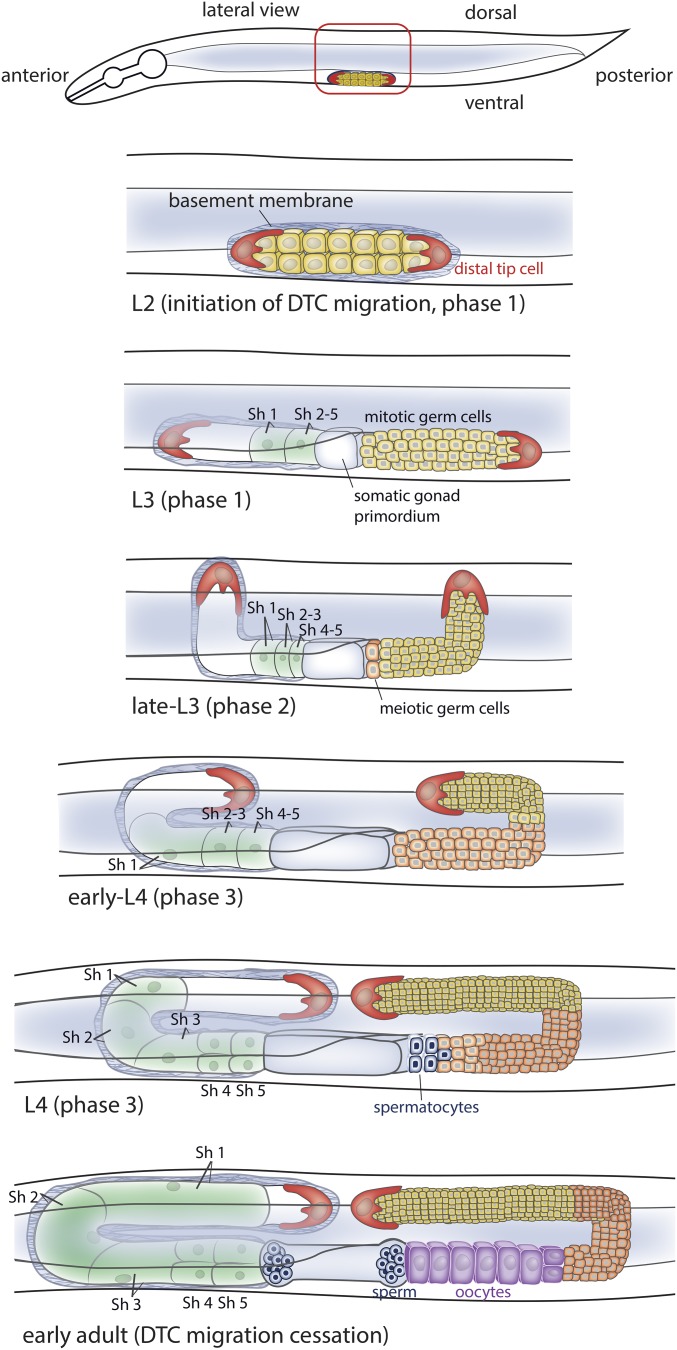Figure 4.
DTC migration, a leading cell that shapes an organ. The pair of DTCs (one on the anterior the other on the posterior arm of the basement membrane enwrapped gonad) initiate migration at the L2 larval stage. During the L2 and L3 larval stages (phase 1 of migration), the DTCs move ventrally away from each other along the BMs of the ventral body wall muscles (data not shown) toward the anterior (head) and posterior (tail) of the animal. In the rest of the figure, the posterior gonad arm (right side) shows the germ cells from the L3 stage onward, while the anterior arm (left side) shows the basement membrane and five pairs of sheath cells (sh1-5) that cover the germ cells. The sheath cells follow the path of the DTCs. The digestive tube is shown in light gray and the anterior gonad arm passes underneath it to the other side of the animal. During the late-L3 stage, both DTCs turn 90° and move from the ventral to dorsal surface (phase 2 of migration), moving along the BM of the lateral epidermis. At the early L4 stage, the DTCs turn 90° and move back to the midsection along the BM of dorsal body wall muscles during the L4 stage (phase 3 of migration). DTC migration ceases in the early adult.

